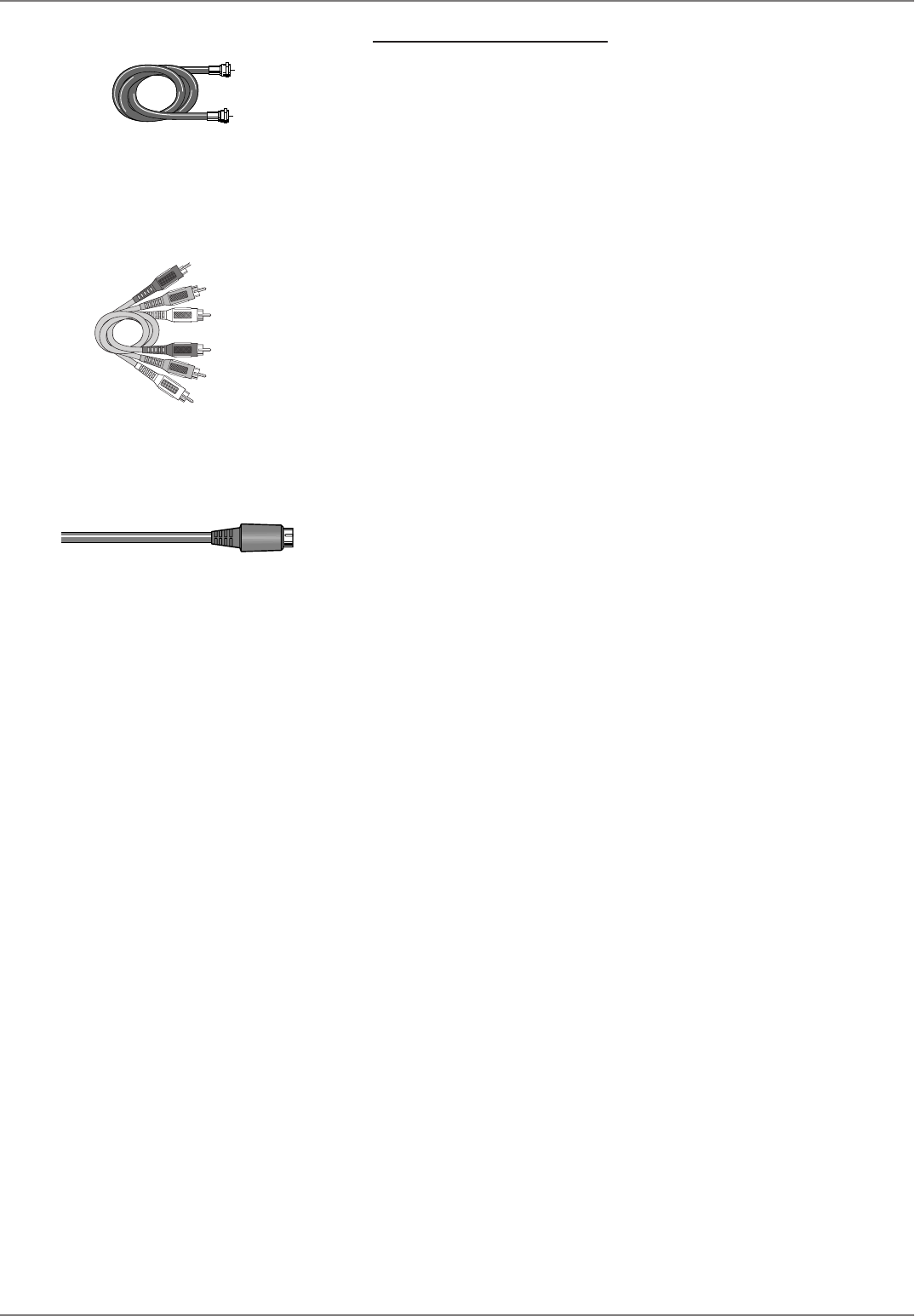
Graphics contained within this publication are for representation only.
9
Chapter 1: Connections and Setup
Connection: DVD/VCR + TV
1. Connect the signal (cable or antenna):
Note: Depending upon how you currently have your TV connected, you’ll have to disconnect the
cable from your TV’s Antenna Input jack (sometimes labeled CABLE/ANTENNA) or your VCR’s
Input jack before you connect the cable as explained below.
Cable service: If you have cable service via a cable that comes out of the wall, connect the end
of that cable to the CABLE/ANTENNA INPUT jack on the DVD/VCR.
Note: If you have a cable box, go to page 10 for connection instructions.
Off-air antenna: If you use an off-air antenna to get TV programming, connect the antenna’s RF
coaxial cable to the CABLE/ANTENNA INPUT jack on the DVD/VCR.
2. Connect the DVD/VCR to the TV
You need to connect cables from the DVD/VCR’s OUTPUT jacks to the TV’s INPUT jacks in order to
see the content from the DVD/VCR.
Use the RF Coaxial cable that was packed with your DVD/VCR, and connect one end to the
CABLE/ANTENNA OUTPUT jack on the DVD/VCR. Connect the other end to the Cable/
Antenna Input jack on the back of your TV (sometimes labeled CABLE/ANTENNA).
3. If you want to be able to record one TV program while you watch a different program, you need
to connect the audio/video cables in addition to connecting the RF Coaxial cable described in
Step 2.
3a. Connect the audio cables.
A set of audio/video cables was packed with your DVD/VCR. Connect the audio cables to
the OUTPUT AUDIO L (left – white) and R (right – red) jacks on the back of your DVD/
VCR, and to the corresponding Audio Input jacks on your TV (sometimes labeled AUDIO IN
L and R).
3b. Connect the video cable. The cables you use for the video determine the quality of the
picture you’ll see on your TV when you’re playing DVDs. For more information about cables
and signal quality, go to page 4. Connect the video cable (yellow) to the OUTPUT VIDEO jack
on the back of your DVD/VCR, and to the Video Input jack on your TV (sometimes labeled
VIDEO IN).
3c. If your TV has an S-Video jack, use the S-Video cable (supplied). Connect one end of the
S-Video cable (supplied) to the S-VIDEO IN jack on the back of the TV and the other end
to the S-VIDEO OUT jack on the back of the DVD/VCR.
COMPONENT OUT
Y, Pb, Pr (not shown) If your TV has Component Input Jacks (Y,
Pb, Pr), you can achieve even greater picture quality (DVD playback only) by connecting the
DVD/VCR to the TV using these jacks (COMPONENT VIDEO OUTPUT, Y, Pb, Pr on the
DVD/VCR). For more explanation, go to page 4. Component Video cables not supplied with
the DVD/VCR.
Notes:
If your TV is capable of progressive scan, connect the DVD/VCR to the TV using the COMPONENT
VIDEO OUTPUT jacks, and slide the PROG SCAN switch to the ON position to see DVD titles
(movies) in progressive scan format. If you need more explanation, go to page 6.
If you use the COMPONENT VIDEO connection (Y, Pb, Pr), you must connect another video cable
(yellow or S-Video) for VCR playback. The Component Out jacks are only for DVD playback.
4. Attach the AC power cord to the unit.
5. Insert the other end of the AC power cord into an AC outlet (or power strip).
Go to page 15
RF Coaxial cable
If your TV has an S-Video jack,
connect the S-Video cable
(supplied). S-Video provides
better video quality than
composite video (the yellow jack).
Audio video cables are usually color-
coded red, white, and yellow.
Red
Yellow
White
